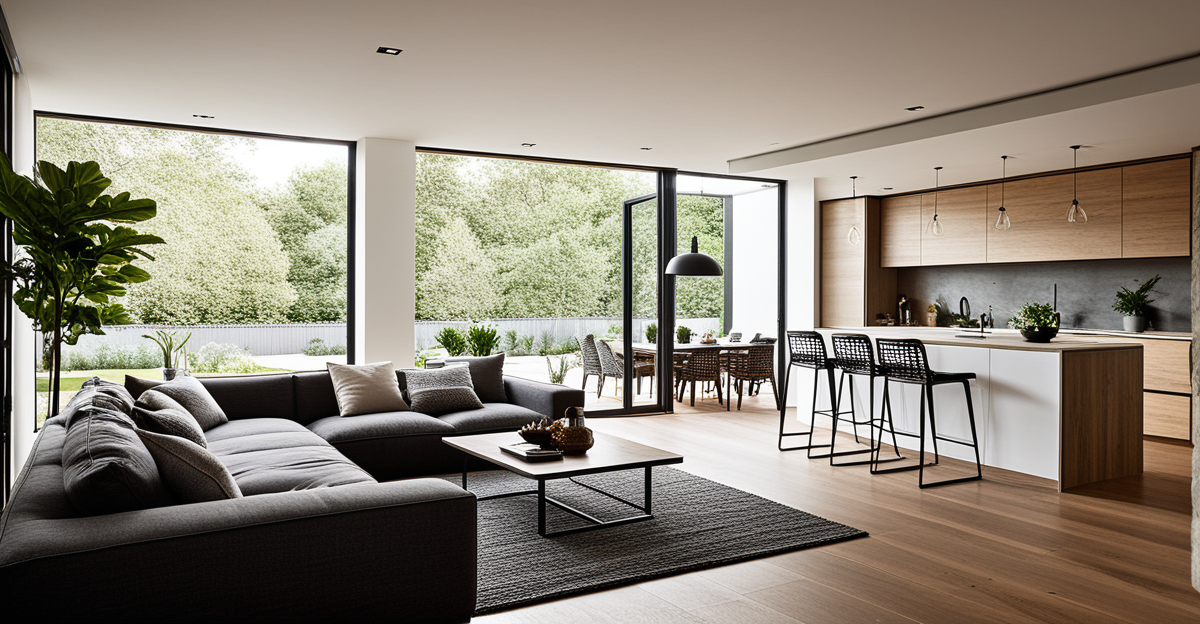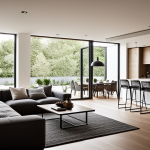Essential Steps for Creating a Multi-Functional Living Space
Creating a multi-functional living space begins with a clear understanding of your lifestyle and primary needs. The first step is to assess how you use the area daily—whether for work, relaxation, entertainment, or exercise. This assessment guides efficient space planning, ensuring every function receives appropriate attention.
Next, define distinct zones for each key activity. For example, create a dedicated corner for work with a compact desk, a comfortable lounge area for relaxation, and space for entertainment or workouts. Thoughtful zoning makes the space feel organized rather than cluttered.
Have you seen this : How Can We Transform Our Living Spaces to Reduce Stress?
Finally, map out a flexible layout that can adapt as your needs change. Employ furniture arrangements that allow for easy reconfiguration. This adaptability is crucial as it helps you maximize living area while keeping the environment practical and comfortable.
By focusing on lifestyle needs, clear zoning, and flexible planning, you set a strong foundation for a living space that efficiently accommodates multiple functions without sacrificing comfort or style. Practical advice often emphasizes balancing individual activities with communal harmony, making everyday life smoother and more enjoyable.
Additional reading : How Can UK Residents Transform Their Living Spaces into Eco-Friendly Havens?
Practical Furniture Solutions for Multi-Use Spaces
Choosing the right multi-purpose furniture is vital to maximize living area in a multi-functional living space. Modular design and convertible furniture allow seamless switching between activities while saving space. For instance, a sofa bed offers seating by day and a sleeping area by night, enabling practical use without crowding.
Space-saving furniture options like foldable desks and expandable tables adapt easily to different needs. These pieces are especially useful when the living space must function as both a work area and a place for relaxation or entertainment. Incorporating storage-infused seating—such as ottomans with built-in compartments—helps keep clutter in check while providing comfort.
Using modular design principles means components can be rearranged or added as your needs evolve. This flexibility supports changing routines and maximizes living area efficiently. For example, stackable chairs or nesting tables can be brought out when guests arrive or compactly stored when not in use.
In sum, practical advice strongly favors selecting furniture that not only serves multiple purposes but also offers adaptability. This approach helps maintain an organized environment, complementing overall space planning efforts in your multi-functional living space.
Essential Steps for Creating a Multi-Functional Living Space
A successful multi-functional living space starts with a deep assessment of your lifestyle and primary needs. This step ensures the space truly supports daily activities, whether for work, relaxation, or exercise. Understanding these priorities allows for precise space planning focused on functionality rather than guesswork.
Once needs are clear, define distinct zones for each activity. This zoning can be subtle—using rugs, furniture placement, or shelving—to differentiate areas without walls. Such deliberate separation maintains order and prevents the layout from feeling chaotic.
Crucially, design a flexible layout that adapts over time. For example, incorporate furniture and clear pathways that accommodate shifts in routine or household changes. Flexibility ensures the space can evolve with you, helping to maximize living area without compromising comfort.
By combining thoughtful lifestyle assessment, careful zoning, and adaptable planning, you create a living space that efficiently supports diverse uses. This practical advice not only enhances usability but also fosters a harmonious atmosphere where every square foot serves a clear purpose.
Essential Steps for Creating a Multi-Functional Living Space
Efficient space planning is the backbone of a successful multi-functional living space. Start by assessing your lifestyle to determine which activities dominate the area—work, relaxation, entertainment, or exercise. This clarity helps prioritize zones and furniture choices that best maximize living area.
Once needs are identified, define clear yet flexible zones for each function. Using subtle boundaries like rugs or furniture placement avoids clutter without erecting walls. For example, a comfortable reading nook can coexist beside an exercise corner without overlapping interference. This zoning technique ensures the space serves multiple purposes seamlessly.
Mapping out a flexible layout is essential for adapting to changing routines or household growth. Opt for open pathways and furniture arrangements that can be reconfigured quickly. A layout that supports smooth transitions between activities reduces friction and enhances comfort. This flexibility also means your space remains efficient as needs evolve.
In summary, by integrating lifestyle assessment, strategic zoning, and adaptable layouts, you create a living space that truly maximizes living area while maintaining harmony and function. This practical advice builds a foundation for lasting usability in any multi-purpose home environment.
Essential Steps for Creating a Multi-Functional Living Space
Efficient space planning starts with a clear assessment of your lifestyle. Identify which activities—work, relaxation, entertainment, or exercise—are most frequent and require dedicated attention. This helps you maximize living area by assigning proper zones that serve each purpose without overlap or clutter.
Next, define separate zones using subtle yet effective methods like rugs, furniture placement, or shelving units. For example, create a quiet corner for work away from entertainment setups, or delineate an exercise spot apart from relaxation areas. These zoning techniques maintain order and optimize function in a multi-functional living space.
Finally, design a flexible layout adaptable to changing needs. Opt for furniture and pathways that allow easy reconfiguration—think movable desks or seating that can be rearranged quickly. This adaptability ensures your space remains practical and comfortable as daily routines evolve.
By combining thorough lifestyle assessment, deliberate zoning, and a flexible layout, you apply practical advice that fully maximizes living area. This foundation makes your living space genuinely multi-functional, balancing diverse activities harmoniously and efficiently.
Essential Steps for Creating a Multi-Functional Living Space
Efficient space planning begins with a thorough assessment of your lifestyle and primary needs. Understanding exactly how the space will be used—whether predominantly for work, relaxation, entertainment, or exercise—enables you to maximize living area effectively. This focus prevents overcrowding and ensures each activity receives the space and resources it requires.
Defining separate zones is key. Use subtle physical markers like rugs, shelving, or furniture placement to create distinct areas without blocking natural flow. For example, a well-positioned armchair paired with a lamp can define a reading nook, while a foldable desk signals a dedicated workspace. This zoning minimizes overlap and clutter in your multi-functional living space.
Mapping out a flexible layout involves choosing furniture that can be rearranged easily and ensuring pathways remain open for smooth transition between zones. Such adaptability accommodates evolving routines or household changes without costly renovations. This practical advice promotes longevity and resilience in your living arrangement, ultimately helping you maximize living area while maintaining comfort and usability.
Essential Steps for Creating a Multi-Functional Living Space
To create an effective multi-functional living space, the first step involves a detailed assessment of your lifestyle and primary needs. Understanding whether work, relaxation, entertainment, or exercise occupies most of your time ensures your space planning aligns precisely with daily demands. For instance, if remote work dominates, prioritizing a defined, ergonomically designed workspace is essential.
Next, clearly define separate zones for each key activity. This zoning can be achieved through subtle design elements such as rugs, furniture placement, or shelving units. Effective zoning minimizes overlap, reduces clutter, and allows each function to thrive without interference. For example, placing a compact desk away from the entertainment area helps maintain focus during work hours.
Finally, map out a flexible layout that can easily adapt to lifestyle changes. This means selecting furniture arrangements and spatial configurations that are simple to modify. Incorporating movable elements and open pathways facilitates smooth transitions between activities, supporting evolving routines. Flexibility in layout and zoning is vital to maximize living area efficiently, ensuring your multi-functional living space remains practical and comfortable over time. Practical advice consistently highlights that these foundational steps enhance both usability and harmony within the home.







